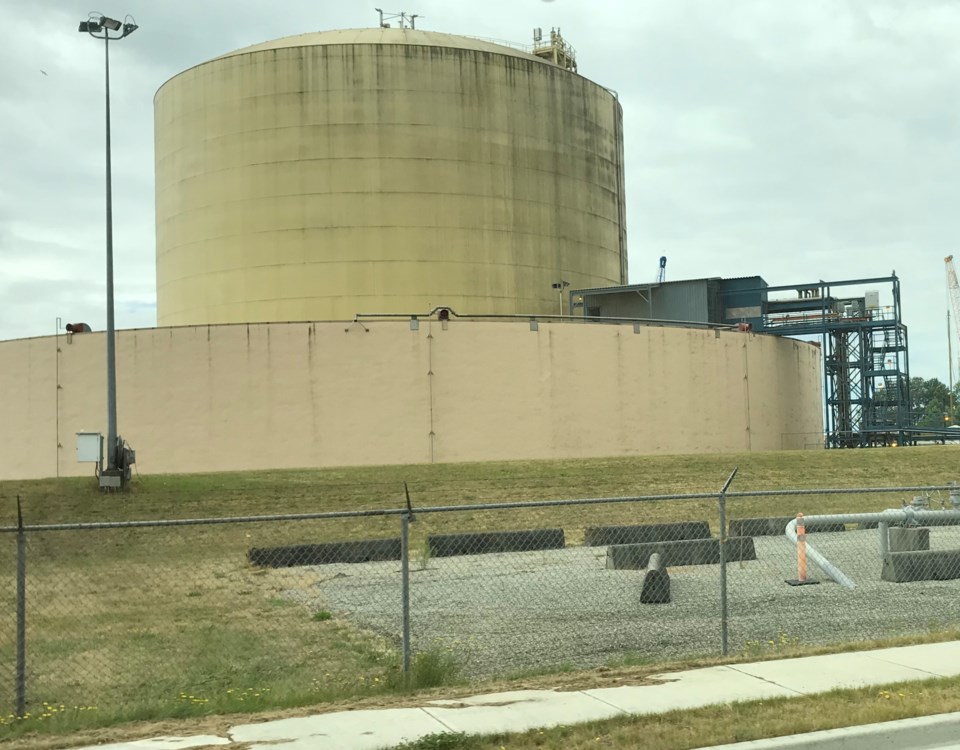The application by FortisBC to expand its Liquefied Natural Gas facility in Delta is moving to the next step.
A detailed project description has been filed this week for the Tilbury Phase 2 Expansion as part of the environmental review process, FortisBC announced.
The utility had been gathering input from Indigenous groups, stakeholders and the general public to produce the detailed project description, which outlines the project and its potential impacts.
It has been filed with the BC Environmental Assessment Office (EAO) and the Impact Assessment Agency of Canada, both working cooperatively for the initial phase of the project review, to complete the early engagement phase.
The province had asked that both federal and provincial environmental assessments be completed through a single review process.
FortisBC says that since launching the project in February 2020, it has refined the proposed design.
The proposed storage capacity of the new tank has been reduced 12 per cent to 142,400 cubic metres, while the proposed liquefaction capacity has been reduced 28 per cent to 2.5 million tonnes per year.
The EAO and Indigenous groups will now evaluate the detailed project description and the comments received during early engagement.
It will be part of a “readiness decision” phase, where the EAO will seek consensus with participating Indigenous nations on whether to start the environmental assessment, require revisions to the detailed project description or recommend to the minister of environment to exempt the project or terminate the process.
FortisBC says it will continue to engage with Indigenous groups, stakeholders and the public as the project moves forward, including during new public comment periods expected next year.
Operating in Delta since 1971, the Tilbury LNG facility went through a first phase of expansion in 2018.
Meanwhile, a separate application to build an LNG facility adjacent to the FortisBC plant, the Tilbury Marine Jetty Project by the Tilbury Jetty Limited Partnership, continues to wind its way through the application process.
The partnership is between affiliates of FortisBC and Seaspan.
That proposed project would load LNG from the FortisBC Tilbury facility onto ships for both local use and overseas export.
The marine jetty would provide berthing and loading facilities for up to 69 LNG carriers a year to serve offshore markets and up to 69 LNG bunker vessels to serve local and regional markets.



